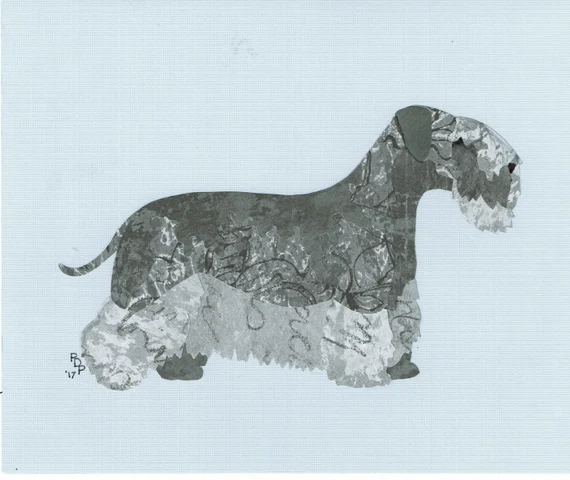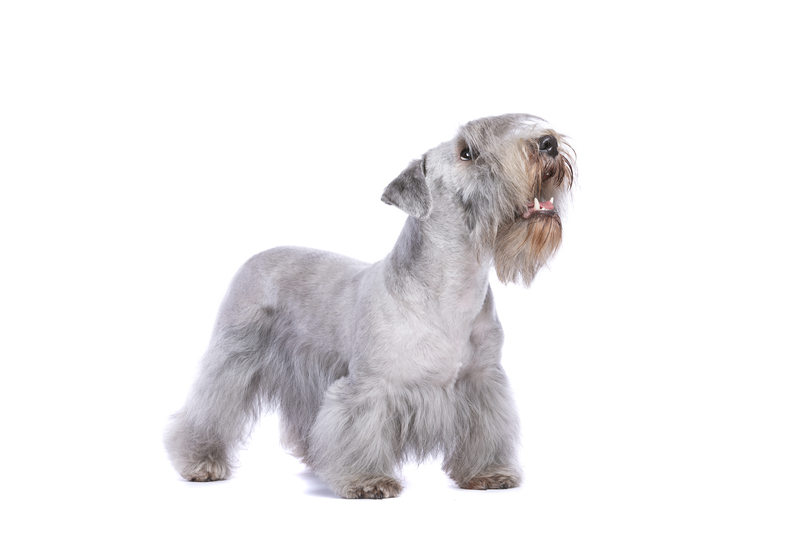
Shortly after the breed was recognized by the AKC in 2011, this was overheard outside a Cesky Terrier conformation ring: “Why did they need a new terrier?”
The Cesky was certainly not a “new” breed – development of it had begun in the mid-1900s. Nor did breeder, Frantisek Horak, create the Cesky Terrier as a lark. An avid hunter, Horak wanted an adaptable terrier that was more easy going than some other terriers he felt were too headstrong and dominant. Yes, he wanted a small, independent terrier that could hunt with him in the Bohemian forests as a singleton, but he also wanted a terrier that could be part of a pack and not pick fights with pack mates.
Thinking that such a cross would lead to a more cooperative and successful working terrier, Horak crossed Scottish Terriers with the Sealyham Terrier, and named his kennel Lovu Zdar, which literally means “hunting success.” In this post, we want to touch upon how the Cesky met Horak’s goals, and why the breed is visibly different from other terriers.
What most “lay people” notice first about the breed is its topline. It is decidedly not level as it rises slightly higher over his loin and rump, but it is essential to breed type. The Cesky is a well muscled dog (it’s mentioned four times in the breed standard). The dog’s longer loin acts like a loaded spring, and provides balance as well as agile turning. It is also so strong and muscular that it is a bit rounded, the rump slanting slightly downward so that it appears to be higher than the withers. Put another way, the topline isn’t straight because the loins and rump are moderately arched, the hip bones often a bit higher than the withers. It worth mentioning that young puppies may have a somewhat flat topline because the arch over their loins develops with age. As adults, however, the highest point of their topline past the withers should be at their rump in profile.

Cesky Terrier ©Erik Lam | Dreamstime.com
Another attribute quickly noticed is the breed’s natural tail. It is low set, and unlike some other terriers, the Cesky’s tail is held down when at rest, sometimes with a slight upward bend at the tip. When gaiting, the dog may carry it down, horizontally or up, but it’s never curl over or against the back. The latter is incorrect for the breed and hints at an incorrect topline. That said, a Cesky may carry his tail higher than usual when alert, and this is helpful to the hunter when the pair are out in tall grass where dog’s body isn’t visible.
Also unlike other terriers, the Cesky’s coat is not handstripped or carded. A long fall of hair on his face protects it from throrns and underbrush, and longer furnishings on his lower half protect the body that is under his “water line mark,” but the breed standard stipulates that a correct coat is clipped. Clipping emphasizes a slim, well-muscled and elegant hunting dog, but more than that, Horakit wanted a dog with whom he could hunt one day, and show in a conformation ring the next. He believed clipping was a much easier way for hunters to deal with grooming a true hunting terrier, and he wasn’t wrong.
Horak specifically bred his ideal dog to fit in holes that were too small for either of the root breeds, the Scottie and Sealyham, and thus he had to keep the dog’s chest circumference smaller, and more cylindrical than deep. The Cesky’s body is positioned more on top of his forelegs than either the Scottie or the Sealyham, and while he kept the oblong outline of his Sealyham Terrier forebearer, the Cesky’s head is not as wide as a Sealyman’s, nor as long as a Scottie’s. Height and weights are between the two terrier ancestors, as well, and hindquarters don’t have the breadth nor the width of either the Scottish Terrier nor the Sealyham.
He has straight, well boned, and parallel forelegs because the Cesky was quite literally born to dig. His elbows are alongside his body, not under it, and to understand why this better, you need only put your own elbows against and a little in front of – your own ribs. Now pretend to dig at the air. It’s limited, right? If your elbows were allowed to hang at your sides and you were to “air dig,” now you have shoulder action helping you and your range is significantly better. Short legs and a low center of gravity allows the Cesky to negotiate himself through directions while remaining upright
On these pages, we like to point out how form follows function in our breeds, and the Cesky Terrier is a fine example of this. Harder to illustrate in print is Horak’s success in creating a terrier breed that doesn’t have the “spitfire” of some other terriers and lacks a proclivity to spar. Pack-friendly, quiet, attentive and focused, the Cesky is still a tenacious hunter, but a little more laid back and tractable than the usual terrier.
Image: Cesky Terrier created from 10 to 20 individually hand cut pieces of paper in a variety of colors and patterns, combined in layers, then mounted on color stock, by Patricia Peters – CanineCutUps
https://www.etsy.com/shop/CanineCutUps
